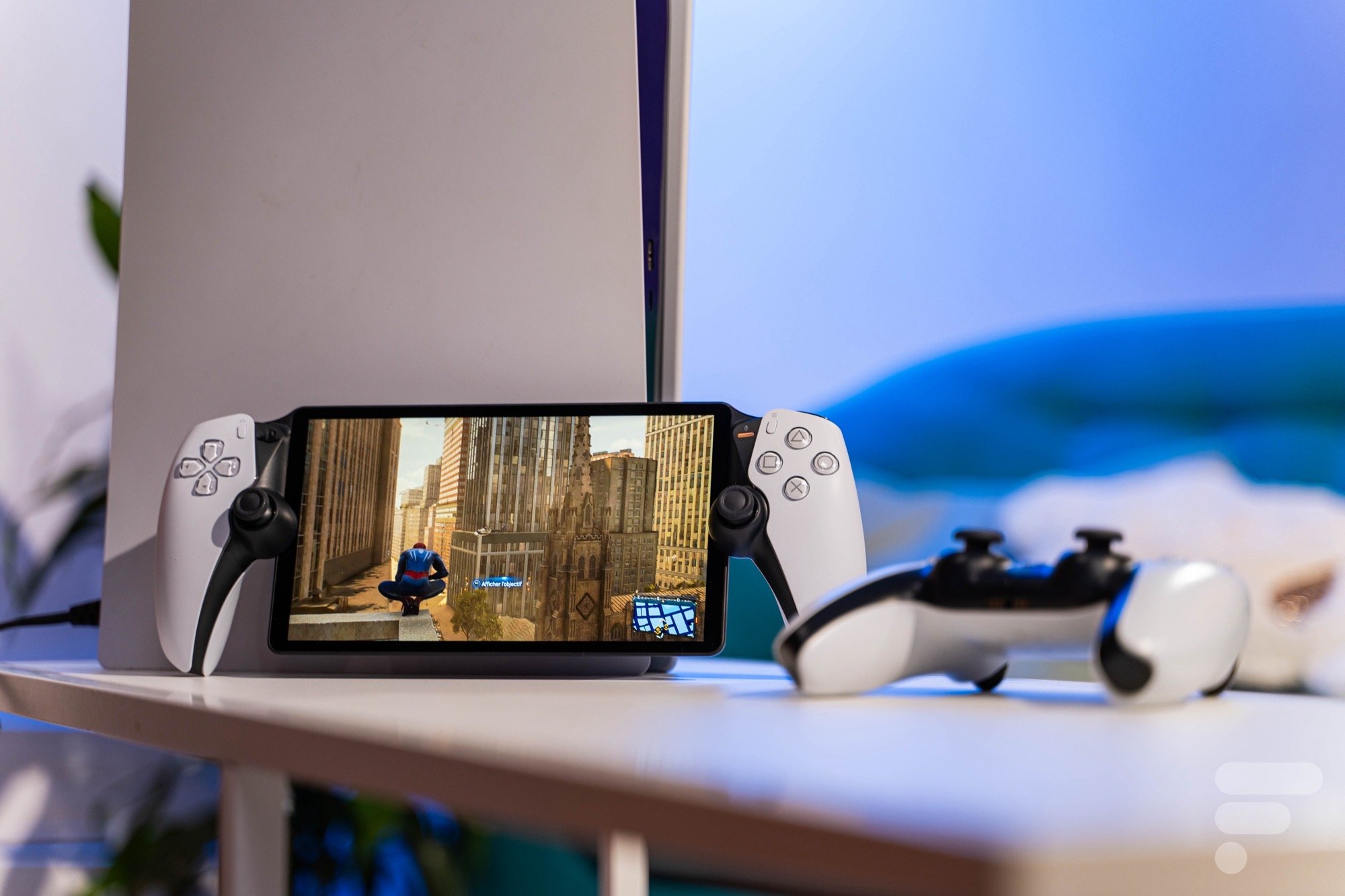The months leading up to the release of PlayStation Portal were strewn with doubts among players and journalists. Is this a portable console from Sony? Not really. Is it just a Remote Play device? So should the console be turned on? Maybe. And above all, should we connect it to the same Wi-Fi network as the PlayStation 5? Until a few weeks ago, some of these questions were still unanswered.
We now know what the PlayStation Portal is capable of and therefore, what this “ Remote reader» can be useful. And after a few days of using it, we’re still wondering.
Sony PlayStation Portal Technical sheet
This test was carried out using a product loaned by Sony.
Sony PlayStation Portal A breeze to use
First impressions once the PlayStation Portal is encouraging. This is indeed a Sony machine, a real DualSense controller split in two to make room for a beautiful 8-inch LCD screen with slight black borders.
We instantly find the ergonomics of a gaming session on PS5, but also the sensations since the PlayStation Portal also uses all the haptic technologies of the DualSense, but also its adaptive triggers.
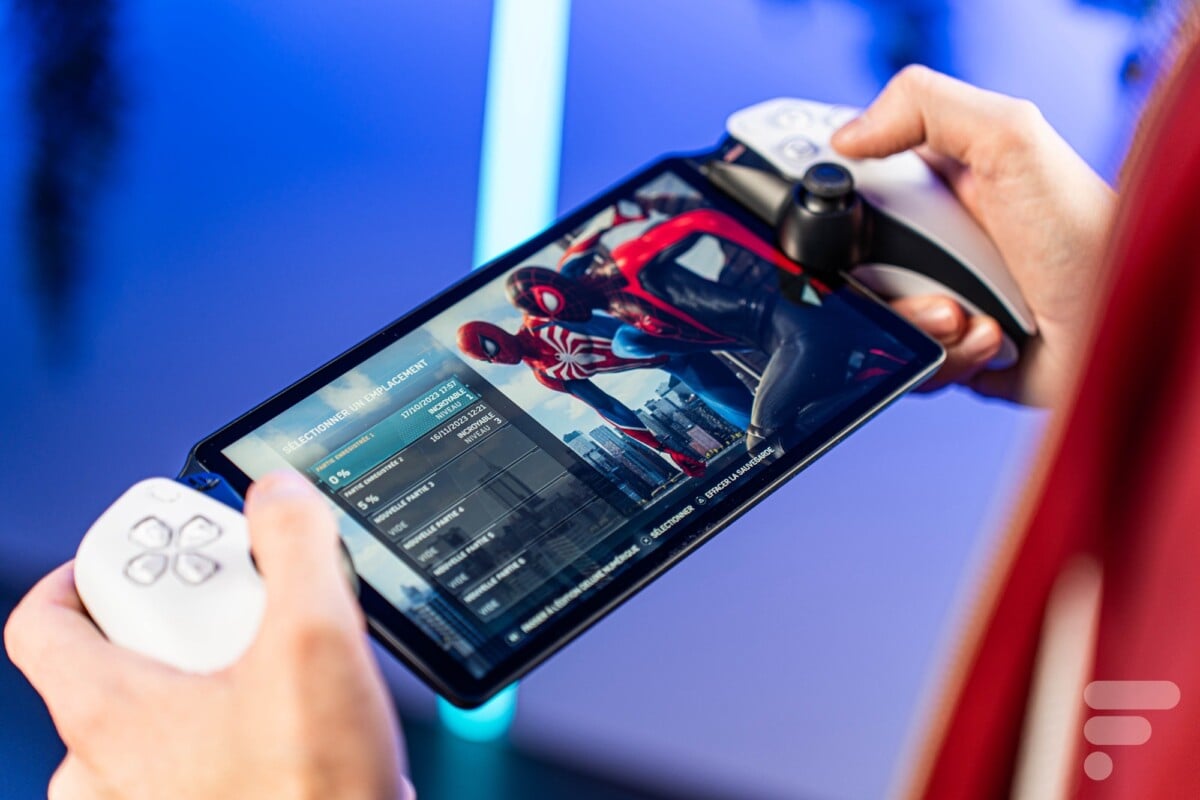
As it is not really a real portable console, but a remote player, it remains light at 540 grams. With this diagonal, we obviously remain above the Nintendo Switch (400 grams), but well below a Steam Deck which is eyeing towards 700 grams. I was able to play it for hours without feeling the slightest discomfort and that’s all we can ask of it. However, the formal complexity of the device makes it inherently fragile, in particular this thin screen whose corners are very exposed in the event of a fall for example.

Source: Chloé Pertuis for Frandroid

Source: Chloé Pertuis for Frandroid
In terms of use, you should know that PlayStation Portal does not connect directly to your console, but to the PlayStation account associated with it. The first step will therefore consist of activating the option “ Remote playback » on your PS5 before you can use the device. The Portal then asks you to log in to your PlayStation account. A word of advice: have the PlayStation App installed on your smartphone to make this step easier, otherwise the machine will ask you to solve a series of ten captchas which represent a slight challenge (and above all a waste of time) on their own.
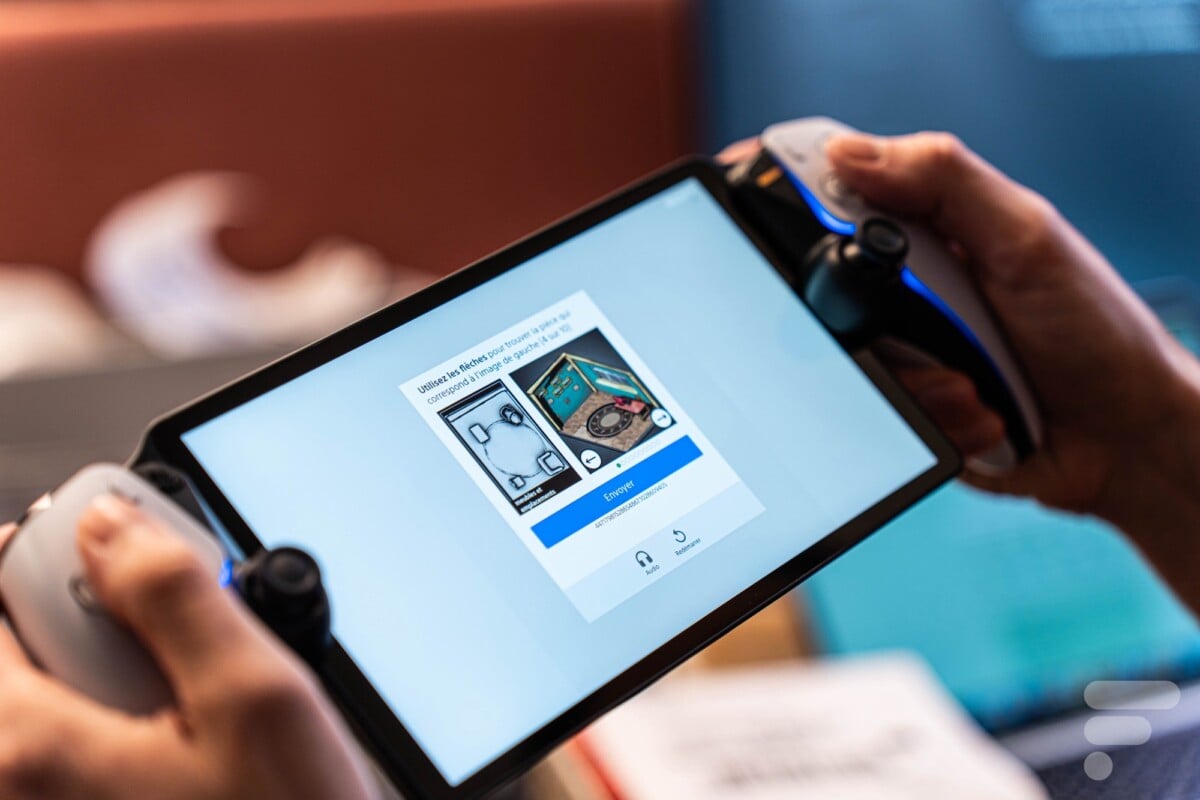
Once PlayStation Portal is launched, all you have to do is select your associated console on the device and wait for it to connect to it. We remain on familiar ground here, Sony has refined its remote reading functionality in recent years and the Portal represents the ultimate simplicity.
Sony PlayStation Portal A beautiful screen, but where is the Oled?
Sony has chosen LCD for the screen of its PlayStation Portal. This is a beautiful 8-inch panel with relatively good contrast and calibrated colors that are fairly accurate. It’s bright and the screen has the merit of not pushing the saturation knobs to the maximum.
However, we would have liked to see Sony offer Oled on such a diagonal for an even more immersive gaming experience. This technology is now making Nintendo Switch owners happy, but also on the Steam Deck side which showed an undeniable gain in comfort once the transition was made.
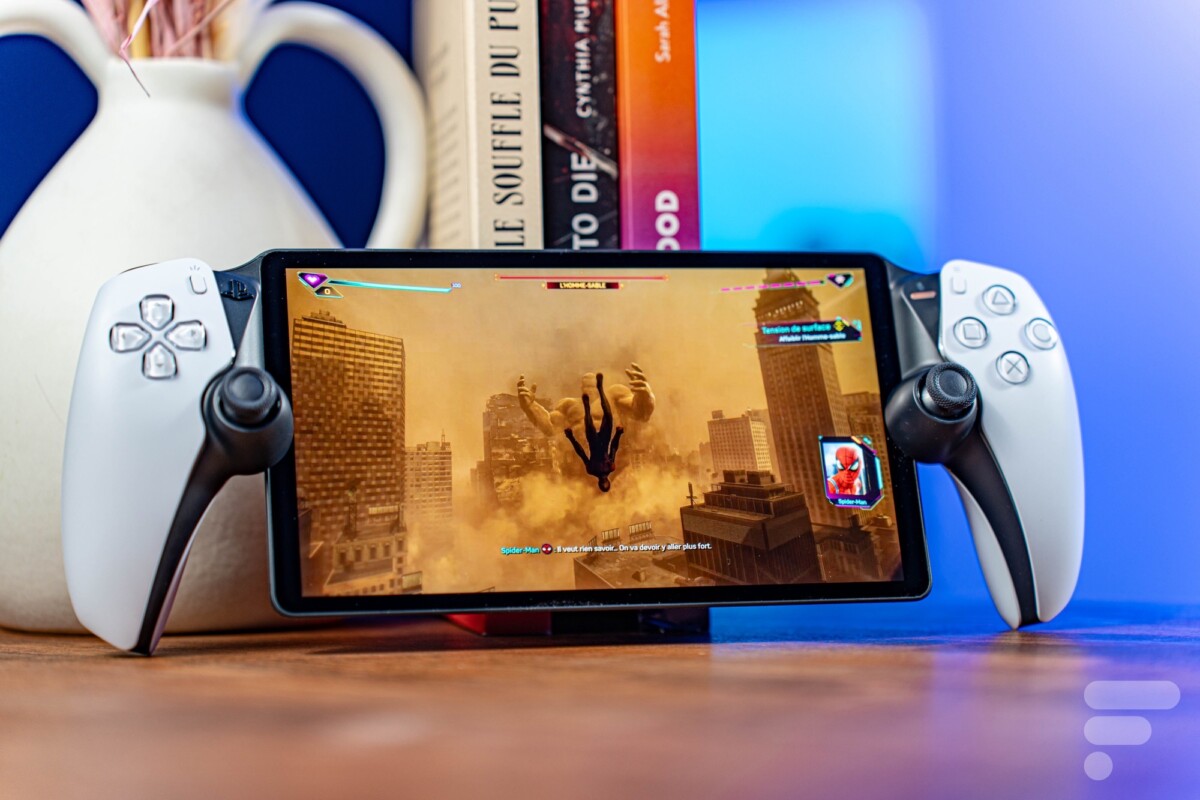
In terms of definition, the PlayStation Portal can display up to Full HD 1080p in 60 frames per second. Requiring more would have too big an impact on the performance of the machine on the one hand (we talk about it just after), but also on its autonomy.
However, this is a very satisfactory screen which in game seemed similar to and even better than certain portable LCD consoles on the market (the original Switch for example).
Sony PlayStation Portal Efficient, but in the right conditions
We remind you once again: PlayStation Portal is not a portable console. This is a remote player that only streams content from your PS5 to its screen. The actions you perform on your Portal will be reflected on your PS5 and vice versa. Its use is therefore very limited and identical to Remote Play already available on computer, smartphone or tablet.
Remote Play and only Remote Play
In addition, the device is only dedicated to video games. You will not be able to watch Netflix, YouTube or any other video platform on PlayStation Portal, even with HDCP enabled. We bitterly regret it, especially with the visual comfort that the machine can provide.
The device also does not allow you to play cloud gaming games available on the PlayStation Now service, although it is optimized for this use. Sony therefore locks its Portal into its Remote Play use and we bitterly regret it.
Do you have a good connection?
Since the PlayStation Portal is a wireless device, Sony recommends a Wi-Fi connection of at least 5 Mbit/s, while specifying that a speed of 15 Mbit/s is recommended for an optimal experience. Especially if your console is also connected via Wi-Fi, its upload speed must be fast enough to hope to send the stream without too much stuttering.
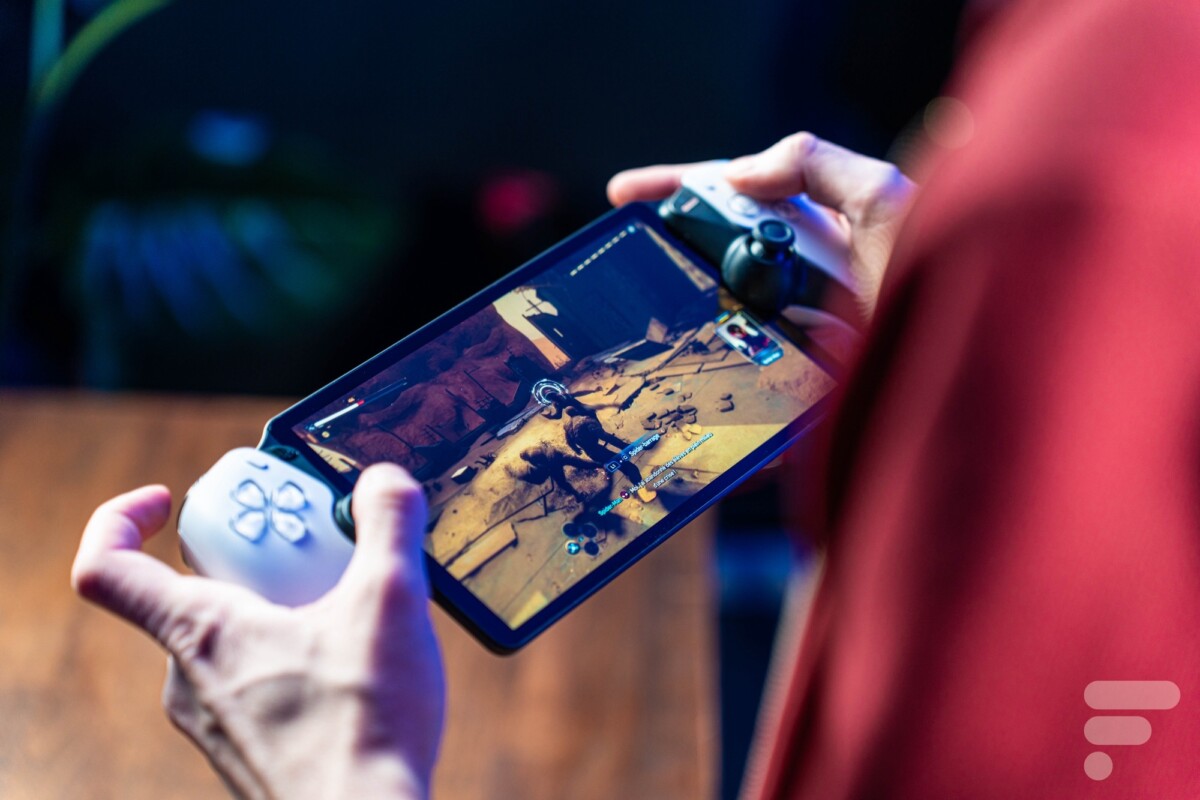
We tested it first in this scenario and it’s not ideal, especially if your Wi-Fi connection is used by other devices. We observed numerous slowdowns in game, coupled with quite noticeable compression artifacts. In the case where you are the only user in your home using efficient Wi-Fi, the experience may then work, but will vary depending on the distance that separates your devices from your router.
We confirm it: PlayStation Portal works well outside the home, as long as you have, once again, a good internet connection. One limitation, however: PlayStation Portal cannot connect to public Wi-Fi points that require displaying a web page, as the device does not have a browser. This therefore reduces its possibilities of use. In addition, the use is far from optimal according to our tests and Sony does not offer a dedicated carrying case for sale.

We therefore advise you to connect, if possible, your PlayStation 5 via an Ethernet cable (RJ45). It is in this configuration that the PlayStation Portal takes on its full meaning, especially with a fiber connection. We were able to test Marvel’s Spider-Man 2 , Elden Ring And Fortnite all three of which ran at 60 frames per second when performance mode was activated.
Acceptable latency
The latency is then rather satisfactory depending on the titles. Spider-Man 2is very permissive on this point and any delays in input are easily forgiven. ForElden RingAndFortniteit’s a little more complicated and the most demanding players will observe a little latency which will prevent the Portal from being used in a competitive setting.
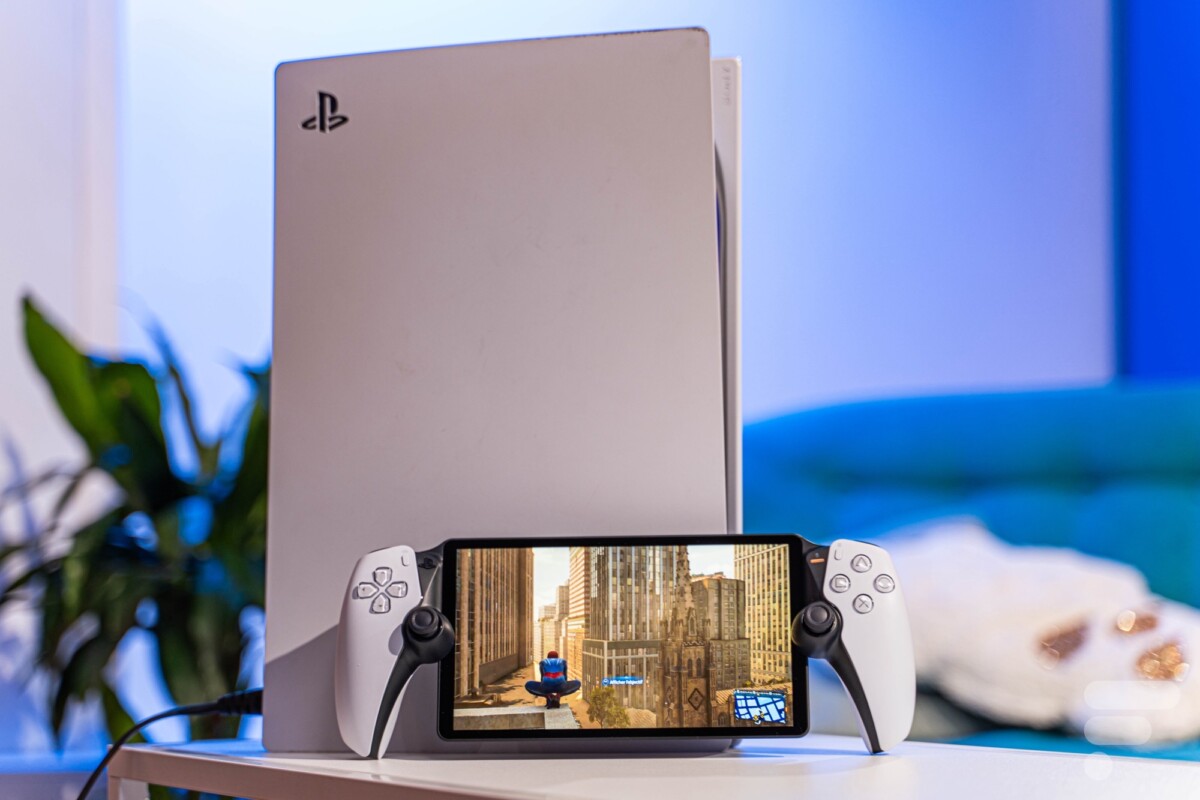
If the fluidity is there, it is not at the level of native rendering. Once the PlayStation Portal is placed side by side with a screen to which we have plugged a PS5, we observe slight drops in framerate here and there on the mobile device, which in no way reflect the performance of the console. However, the experience is comfortable and sometimes even astonishing when you are in good conditions.
Sony PlayStation Portal Good autonomy
The PlayStation Portal does not render anything on its screen, so its autonomy is agnostic to the type of content you can stream on it. However, a demanding game with photorealistic graphics will require a slightly more efficient connection to be copied fluidly on its 8-inch screen.
In game, the autonomy is between 5 and 6 hours with the brightness at max. But by playing on this setting, you can wait 7 to 8 hours, which is very comfortable for long gaming sessions.
Sony PlayStation Portal Price and release date
PlayStation Portal is available for 219 euros.
Where to buy
Sony PlayStation Portal at the best price?
